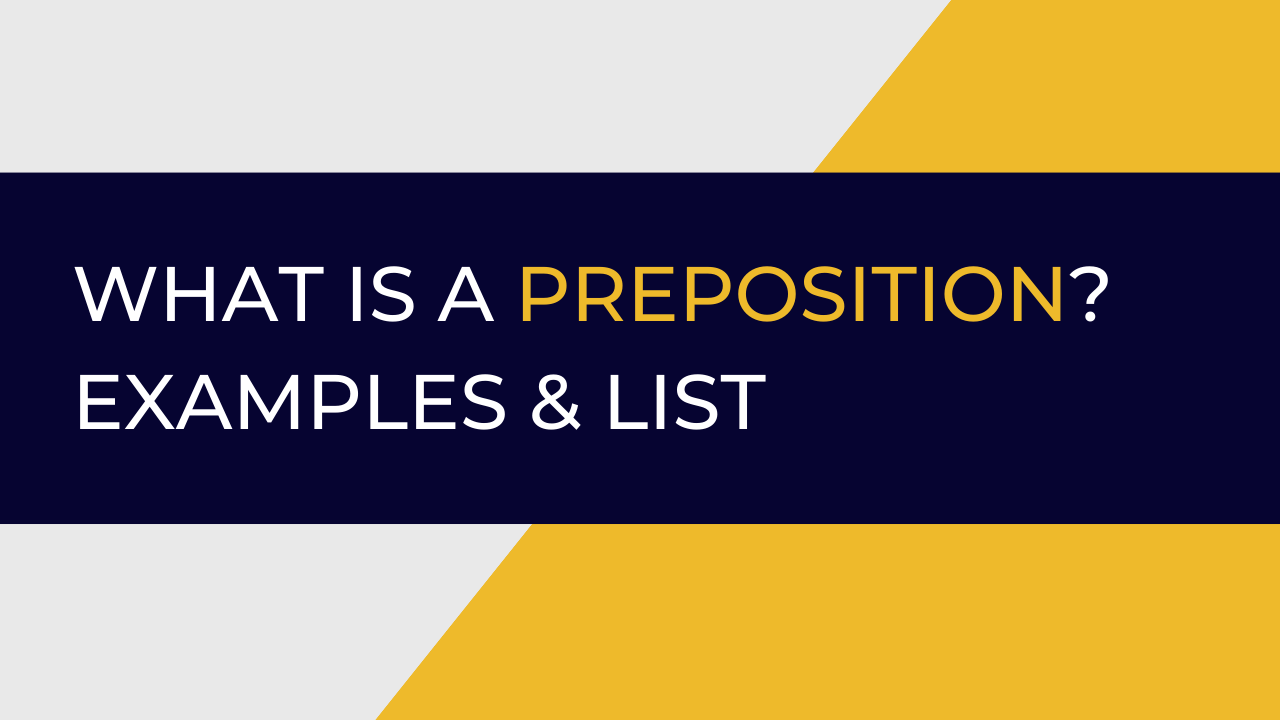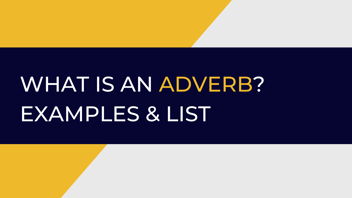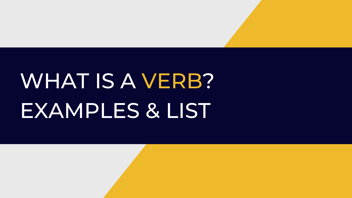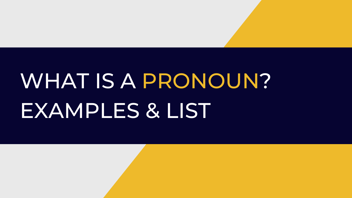What is a Preposition? Definitions, Examples, and Comprehensive List
Prepositions are small, easily overlooked words—but they punch far above their weight in writing. Whether you're crafting a sales page, ghostwriting a book, or revising a client's LinkedIn bio, the wrong preposition can shift the entire meaning of a sentence. And the right one? It can bring clarity, precision, and rhythm that elevates your writing instantly.
I've worked with over 130 authors, entrepreneurs, and executives, and one thing I’ve learned is this: most writers—even advanced ones—struggle with prepositions. Why? Because they’re deceptively tricky. There are dozens of them, many look similar, and the rules aren’t always intuitive—especially if English isn’t your first language.
This guide is here to change that. We're not just defining prepositions—we’re unpacking how they function, why they matter, and how to master them without memorizing endless lists. If you care about writing that’s clear, persuasive, and professional, you can’t afford to ignore these little words.
Why Prepositions Matter More Than You Think
If you're aiming to write with clarity and authority—whether you're leading a team, building a brand, or publishing a book—your mastery of prepositions can make or break your message.
Prepositions don’t just connect words. They establish relationships—between ideas, between people, between time and space. They help your reader understand how and why things relate. Think of them as the GPS of language: they orient the reader, signal movement, and bring structure to the sentence.
In my work as a writing coach and ghostwriter, I constantly see how weak or incorrect prepositions lead to confusion. A pitch deck says someone “worked with the strategy,” when they meant they “worked on the strategy.” A thought leader says they’re “interested by communication,” instead of “interested in communication.” These may seem like small slip-ups, but they add up—causing misunderstandings or making your writing sound less professional.
The best part? Once you start noticing prepositions, you can start using them as a tool—not a trap. You’ll write sharper copy, craft more elegant sentences, and say exactly what you mean, every time.
Definition of a Preposition
A preposition is a word that shows the relationship between a noun or pronoun and another element in a sentence. These relationships often involve time, place, direction, cause, manner, or instrument—making prepositions essential for clarity and meaning.
In simpler terms, prepositions help answer questions like:
Where did something happen?
When did it happen?
How did it happen?
With what or whom?
Here’s a straightforward example:
The book is on the table.
In this sentence, on is the preposition. It shows the spatial relationship between the book (noun) and the table (another noun). Without the preposition, the sentence loses meaning and structure.
Let’s look at how prepositions work in real-world writing:
-
I’ve been working on this manuscript for months.
-
She pitched her idea to the board.
-
He spoke with clarity and purpose.
-
The results were reviewed by the client.
In each case, the preposition introduces a prepositional phrase—a group of words that adds context or detail. These phrases often act as adjectives or adverbs, modifying another word in the sentence.
What matters most is not just choosing a preposition, but choosing the right one. Each preposition conveys a specific kind of relationship, and the difference between “in,” “on,” and “at,” for example, can change the tone or meaning of a sentence entirely.
How Prepositions Shape Meaning in a Sentence
Prepositions do more than just link words—they give your writing structure, rhythm, and intent. One misplaced preposition can muddle the meaning of a sentence. The right one can make it sound polished and professional.
Here’s an example I often use in coaching sessions:
She spoke to the team.
She spoke with the team.
Both sentences are grammatically correct, but they suggest different dynamics. The first implies a one-way conversation; the second implies collaboration. One word, one preposition—completely different impression.
This is where understanding how things relate becomes crucial. Prepositions clarify relationships between:
-
Two things or people (e.g., between, among)
-
Actions and time (e.g., before, after)
-
Movement and direction (e.g., into, toward)
-
Cause and agent (e.g., by, with)
-
Position and space (e.g., under, above)
They also help your reader understand how noun phrases and prepositional phrases interact. For instance, in the sentence:
The report on climate impact was published in September.
We have two prepositional phrases—on climate impact and in September—both modifying different parts of the sentence. Without them, the sentence loses meaning and specificity.
The takeaway: if you want your writing to be more intentional, more persuasive, and more precise, you need to develop a sharper eye for how you use prepositions.
The 5 Types of Prepositions You Must Know
Not all prepositions serve the same purpose. In fact, most confusion around preposition usage comes from not knowing which type you're dealing with. Writers often rely on what “sounds right,” but that’s not enough when you're aiming for clarity, precision, and professionalism.
Understanding the main types of prepositions will help you choose the right one for the context—and avoid unnecessary or awkward phrasing.
Let’s look at the five essential categories every serious writer needs to master.
1. Prepositions of Time
Prepositions of time help us place events in chronological context. They show when something happened, happens, or will happen. These prepositions are often small, but they hold powerful meaning.
Examples of prepositions of time:
-
before
-
after
-
by
-
during
-
on
-
in
-
at
-
since
-
until
Examples in sentences:
-
I’ll send the draft before Friday.
-
We worked on the launch plan during the retreat.
-
The meeting starts at 9 a.m.
-
She’s been revising that chapter since last week.
Writers often confuse prepositions of time like on, at, and in. A helpful way to think about them:
-
At pinpoints a specific time (at noon)
-
On identifies a day or date (on Monday)
-
In is used for longer spans (in October, in 2025)
This is where commonly confused prepositions come into play. One small mistake can subtly erode the professionalism of your writing. As a coach, I've seen business writers say they’ll “finish something in Friday,” when they meant by Friday. That tiny slip creates uncertainty—and often signals to a reader that the writing wasn’t reviewed carefully.
2. Prepositions of Place
Prepositions of place describe where something is located in space. They're foundational to both descriptive and functional writing.
Examples of prepositions of place:
-
in
-
on
-
at
-
under
-
over
-
beside
-
next to
-
between
-
above
-
below
Examples in sentences:
-
The files are on the shared drive.
-
She’s in the meeting room.
-
The client was seated next to the CEO.
-
We placed the order forms under the sign-in sheet.
It’s easy to default to the same few words (in, on, at), but these prepositions can be made more precise. For example, on suggests direct contact with a surface, while above implies a vertical relationship without contact. That distinction matters, especially in technical, legal, or instructional writing.
I often remind clients: writing isn't just about getting words down—it’s about placing ideas in the right space, both literally and figuratively. That’s where prepositions of place do their best work.
3. Prepositions of Direction or Movement
Prepositions of direction (sometimes called prepositions of movement) indicate motion from one place to another. These are especially common in narrative writing, instructions, or action-driven business communication.
Examples of prepositions of direction:
-
to
-
into
-
onto
-
toward
-
through
-
across
-
from
-
out of
Examples in sentences:
-
She walked into the boardroom with confidence.
-
We’re moving toward a more sustainable model.
-
The team traveled from Toronto to New York.
-
He stepped onto the stage without hesitation.
These prepositions frequently appear alongside phrasal verbs, such as:
-
move on
-
look into
-
turn around
-
step down
And that’s where many writers get tripped up. I once edited a business article where the author wrote, “We’ll dive in this issue next quarter.” It should have been, “dive into this issue.” The wrong preposition turned a sharp line into a linguistic speed bump.
To elevate your writing, listen for movement. If something is going somewhere, a directional preposition should probably be there—and the correct one matters.
4. Prepositions of Agent
Prepositions of agent are used to show who or what is performing an action—particularly in passive constructions. They’re subtle but crucial for identifying the doer of an action or the tool behind a result.
Common prepositions of agent:
-
by
-
with
Examples in sentences:
-
The report was written by the research team.
-
The door was opened with a master key.
-
The manuscript was edited by the author herself.
-
The logo was designed with AI software.
In coaching sessions, I often find clients overusing by when with is more appropriate—or vice versa. For example, writing “the tool was fixed by a wrench” doesn’t quite work. The wrench didn’t fix it; someone used the wrench. In that case, the correct phrase would be “with a wrench.”
Mastering prepositions of agent also helps you better understand the structure of passive voice—which is essential whether you're ghostwriting a memoir or drafting a corporate press release. You’ll start to recognize when a sentence is missing the agent altogether, and whether that’s intentional or a clarity problem.
This is one of those areas where compound prepositions also creep in (by means of, in collaboration with, in conjunction with)—and each has its own nuance. Choosing wisely shows your command of tone and formality.
5. Prepositions of Instrument
Prepositions of instrument show the tool, method, or means by which something is done. They answer the question: With what? These prepositions are subtle, but they allow you to be precise—especially when describing action or process.
Common prepositions of instrument:
-
with
-
by
-
using
-
via
Examples in sentences:
-
She wrote the outline with a fountain pen.
-
The data was collected by machine learning algorithms.
-
He signed the contract using an e-signature tool.
-
We sent the documents via courier.
Writers often confuse prepositions of agent and instrument, especially in passive voice. Here's a tip I give clients: if the noun following the preposition is a tool, you're dealing with an instrument. If it's a person or entity, it's likely an agent.
For example:
-
The book was written by the author. → Agent
-
The book was written with a typewriter. → Instrument
While with is the most common preposition of instrument, it’s also one of the most overused. You can almost always improve the sentence by being more specific—swapping with for using, via, or a descriptive verb.
This is also where the idea of unnecessary prepositions comes in. “She spoke with eloquence” can often be trimmed to “She spoke eloquently.” But in cases where tone and formality matter, prepositional phrases may be the better choice.
Prepositional Phrases: Your Secret Weapon for Better Sentences
Most writers know what prepositions are, but few think deeply about prepositional phrases—yet these are the units that actually carry meaning and shape sentences.
A prepositional phrase is a group of words that starts with a preposition and ends with a noun or pronoun, often called the object of the preposition. The phrase as a whole functions as an adjective or adverb, modifying another word in the sentence.
Structure:
preposition + modifiers (optional) + noun/pronoun
Examples of prepositional phrases:
-
on the table
-
with a red pen
-
in the middle of the night
-
by the end of the quarter
These phrases may seem minor, but they play a huge role in sentence structure and flow. In fact, I often coach clients to start with prepositional phrases when revising overly complex or vague sentences.
Here’s an example:
Before: The executive decision surprised everyone.
After: The executive decision at the end of the meeting surprised everyone.
The added prepositional phrase gives time context and sharpens the sentence without making it bloated.
You can also use prepositional phrases to control sentence rhythm. Placing one at the beginning of a sentence slows the pace slightly, which is useful when building emphasis or setting a scene:
-
In the final hours of the campaign, donations spiked.
-
Without hesitation, she took the offer.
Another powerful use? Clarity. Prepositional phrases can resolve ambiguity when a sentence otherwise leaves too much open to interpretation. In ghostwriting projects, especially for thought leaders or experts, I often use prepositional phrases to soften tone, add specificity, or support credibility.
The more fluent you become in recognizing and using prepositional phrases, the more natural your writing will sound—and the more precise your meaning will be.
Common Prepositions (and How Writers Misuse Them)
Most writers rely on a small group of common prepositions—words like in, on, at, by, with, of, and to. These are the workhorses of English grammar. But because they’re so common, they’re also the most frequently misused.
When editing or coaching clients, I often see sentences that are grammatically correct but subtly off because of the wrong preposition. These tiny missteps can lead to confusion, dilute authority, or even shift meaning in ways the writer never intended.
Let’s look at some commonly confused prepositions and how to fix them.
1. In vs. On vs. At
These are often mixed up, especially by non-native speakers—but even native speakers use them inconsistently.
-
She’s at the conference.
-
The report is on the desk.
-
They arrived in the city last night.
Think of it like this:
-
At = a point
-
On = a surface
-
In = inside a volume or boundary
Incorrect: We met on the airport.
Correct: We met at the airport.
2. By vs. With
These two often cause trouble in passive voice constructions.
-
By = who or what performed the action
-
With = what tool or means was used
Incorrect: The novel was written with the author.
Correct: The novel was written by the author.
Incorrect: The window was broken by a rock.
Correct: The window was broken with a rock.
3. Of vs. For
These are often swapped in expressions of purpose or possession.
Incorrect: This is the job of you.
Correct: This is the job for you.
Incorrect: The responsibility for the mistake is yours.
Correct: The responsibility of the mistake is yours. (Even better: "responsibility for the mistake")
4. To vs. Into
Writers frequently default to to, even when into is more accurate for movement or change.
Incorrect: She walked to the room and sat.
Correct: She walked into the room and sat.
5. Ending a Sentence with a Preposition
Let’s clear this up: it’s not grammatically incorrect to end a sentence with a preposition. That’s an outdated myth. But it can sound awkward if not done intentionally.
Acceptable: That’s the problem I was referring to.
Better (sometimes): That’s the problem to which I was referring. (More formal)
The real issue is not whether you end with a preposition—but whether the sentence sounds clean and professional. As a writing coach, I always advise: if the sentence sounds natural and clear, don’t contort it just to avoid a final preposition.
A quick editing tip: Search for the most common prepositions (of, to, by, in) and ask yourself—is this the clearest possible choice? Could it be removed? Could it be replaced with a more precise phrase? This one habit can instantly tighten your writing.
How to Master Prepositions (Without Memorizing a List)
If you’ve ever looked at a list of 100+ prepositions and felt overwhelmed, you’re not alone. Most writers—especially non-native speakers—assume the only way to get better is through rote memorization. But that’s not how mastery works.
The best way to become fluent in preposition usage is to treat it as a pattern recognition skill. That means you improve by reading well-edited writing, writing consistently yourself, and getting real feedback on your drafts.
Here’s how I coach clients and authors to strengthen their grasp on prepositions—without turning it into a vocabulary drill.
1. Read with Purpose
Pay attention to how prepositions are used in books, blogs, emails, and even marketing copy. Notice the difference between phrases like “at risk,” “in control,” “by design,” and “with intention.” These aren't just style choices—they’re structural decisions that affect tone, clarity, and rhythm.
Reading helps you internalize prepositional structures. Over time, you start to sense when something sounds right because it is right—not just because it’s familiar.
2. Edit Your Own Writing Ruthlessly
Most preposition errors come from using the wrong word—or too many words. Here’s an editing exercise I give my clients:
Take a finished piece of writing. Highlight every preposition. Now ask:
-
Is this the most accurate preposition for the idea I’m expressing?
-
Is it necessary at all?
-
Can the phrase be reworded more simply?
You’ll be surprised how many unnecessary prepositions you find. Phrases like “at this point in time” can often be cut to “now.” “In order to” becomes “to.” “Due to the fact that” becomes “because.”
This type of editing forces you to look critically at how your sentences are constructed—and it sharpens your sense of control.
3. Use Writing Prompts That Force Precision
Try rewriting vague or clunky sentences using different prepositions. For example:
Original: The feedback was given to the team by the manager.
Refined: The manager gave the team feedback.
Or: The team received feedback from the manager.
Or: The manager provided feedback with clarity and direction.
Notice how the prepositional phrase modifying the verb shifts depending on what you want to emphasize. This isn’t just grammar—it’s craft.
4. Know the “Little Words” That Matter
Prepositions are often dismissed as small, insignificant parts of speech—just little words that connect the big ideas. But they’re actually the glue that holds your sentences together.
I’ve worked on manuscripts, keynote scripts, and investor decks where the prepositions alone made the difference between clarity and confusion. Mastering prepositions isn’t about memorizing a list—it’s about learning to listen to language at a higher level.
That’s the mark of a strong communicator.
Full List of English Prepositions (Organized by Use)
There are more than 100 prepositions in the English language. Some are simple, some are compound, and many are commonly confused. Rather than memorizing them all, it’s more effective to understand them in context—and by category.
Here’s a structured list to reference, organized by use.
Prepositions of Time
These prepositions indicate when something happens.
-
at
-
on
-
in
-
before
-
after
-
by
-
during
-
since
-
until / till
-
past
-
prior to
-
from
-
up to
-
up until
Examples:
-
The deadline is by Monday.
-
We’ve been waiting since noon.
Prepositions of Place
These describe location or spatial relationships.
-
in
-
on
-
at
-
under
-
over
-
above
-
below
-
beside
-
between
-
behind
-
near
-
inside
-
outside
-
next to
-
in front of
-
beneath
-
underneath
Examples:
-
The phone is on the desk.
-
She stood in front of the crowd.
Prepositions of Direction or Movement
These show motion from one place to another.
-
to
-
into
-
onto
-
out of
-
from
-
toward / towards
-
through
-
across
-
along
-
down
-
up
Examples:
-
He walked into the office.
-
She drove through the tunnel.
Prepositions of Agent
These are used mostly in passive voice to show who is performing the action.
-
by
-
with
Examples:
-
The article was written by the editor.
-
The lock was opened with a key.
Prepositions of Instrument or Means
These describe what is used to do something.
-
with
-
by
-
via
-
using
-
through
-
by means of
Examples:
-
She delivered the message via email.
-
He carved the sculpture with a chisel.
Compound Prepositions
These consist of more than one word and often add formality or specificity.
-
according to
-
ahead of
-
apart from
-
as for
-
as per
-
as to
-
because of
-
due to
-
in spite of
-
in front of
-
in regard to
-
instead of
-
out of
-
on top of
-
together with
-
with respect to
Examples:
-
The update was shared according to company policy.
-
They moved forward in spite of the delay.
This list is not exhaustive, but it covers the most common prepositions and groups them in a way that’s easy to reference and apply. Whether you're editing an email or ghostwriting a book, having this structure in mind helps you stay clear, accurate, and professional.
Pro tip: Bookmark this section or create your own categorized list based on how you typically write. This makes preposition usage easier to master in the flow of writing, rather than as a separate task.
Mastering the Little Words That Make a Big Impact
If you want to elevate your writing, it’s not just about using big ideas or bold language—it’s about mastering the little words that shape how those ideas come across.
Prepositions may seem minor, but they’re often the difference between a sentence that’s merely correct and one that’s precise, persuasive, and polished. They shape the way things relate in your writing: between actions and outcomes, people and places, tools and results.
I’ve worked with authors, entrepreneurs, and thought leaders who’ve built entire careers on communication—and prepositions still trip them up. But the good news is, improving your use of prepositions doesn’t require memorizing hundreds of rules. It just takes practice, attention, and a willingness to revise.
Here’s what you can do next:
-
Review a recent piece of your writing and highlight every preposition
-
Ask whether each one is necessary, specific, and correct
-
Replace vague prepositions with sharper ones
-
Use the lists and examples in this guide as a reference point
These small adjustments compound over time. The more intentional you become with your language, the more clarity and confidence you’ll gain—not just as a writer, but as a leader.
Want help developing stronger writing habits?
Consider subscribing to the Leadership Writing newsletter, or explore coaching options if you’re serious about taking your writing to the next level.
Clarity begins with the words you choose. And prepositions—those seemingly invisible connectors—are where powerful writing starts.
-png.png)





